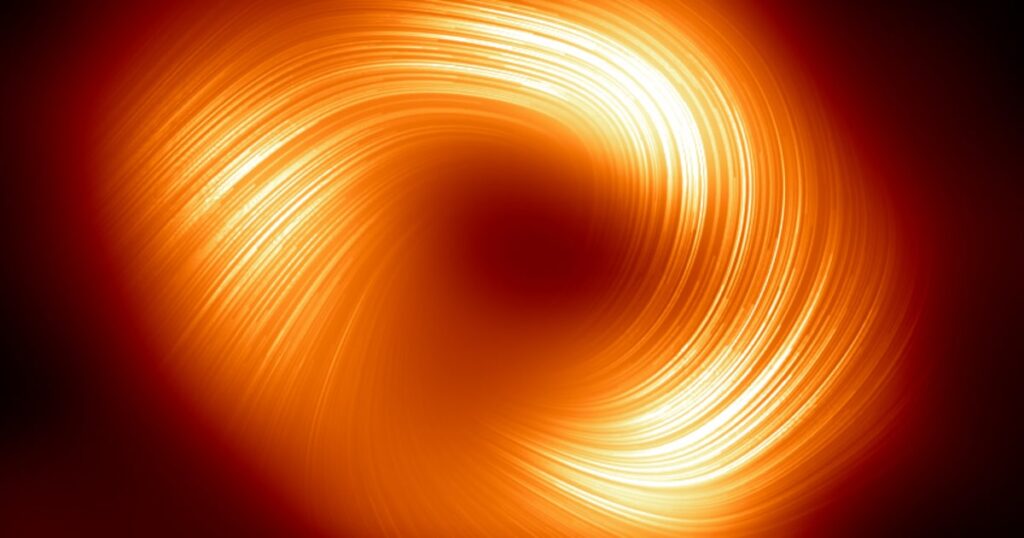
A striking new image of the supermassive black hole at the center of our galaxy has revealed the strong magnetic field that surrounds it, twisting and turning like a spiral.
It’s a never-before-seen view of Sagittarius A* (or Sgr A*), the immense black hole at the Milky Way’s core that gobbles up nearby light and matter.
The image suggests there are structural similarities between this black hole and one at the heart of a galaxy called M87. That black hole — the first ever imaged — is more than 1,000 times larger than Sagittarius A*, but both appear to have powerful, organized magnetic fields.
It’s a clue that the pattern may be common to many or all black holes, according to the scientists behind the image, whose findings were published Wednesday in The Astrophysical Journal Letters.
“We’ve learned that strong and ordered magnetic fields are critical to how black holes interact with the gas and matter around them,” a co-leader of the research, Sara Issaoun, the NASA Hubble Fellowship Program’s Einstein fellow, said in a statement.
To conduct the research, Issaoun collaborated with an international team of astronomers known as the Event Horizon Telescope; the group is made up of more than 300 scientists from 80 institutions around the world.
The same research collaboration captured the first direct visual evidence of Sagittarius A* in 2022, and the team has also studied the M87 galaxy, which is around 53 million light-years from Earth.
The magnetic field surrounding the behemoth black hole at that galaxy’s center, known as M87*, is thought to play a key role in its dramatic behavior: The black hole launches a powerful jet of electrons and other subatomic particles into space at nearly the speed of light.
Such an outburst of activity has never been detected within Sagittarius A*, but the similarities between the two black holes may suggest that a hidden jet could yet be found coming from it, according to the researchers behind the new image.

